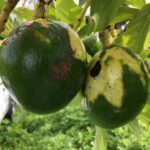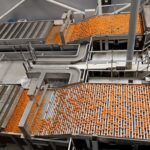Florida blueberry industry expecting good volume from late February

The Florida blueberry industry is just a few days away from its harvesting period. The Peruvian season, which ended in December, offered retailers a very high-quality fruit, contrary to the Chilean fruit which is currently supplying the market, according to Michael Hill, Co-founder, and CEO of H&M Farms during an interview with Fresh Fruit Portal. This is why retailers are eager to get into the domestic volume as soon as possible.
“We're gonna have consistent fruit throughout March, April, and May, with April being the peak,” said Hill.
“Weather has spread out the crops so we will have good volume from late February, early March, all the way through the end of May,” he added.
An important factor for this year has been the weather conditions in Florida because there hasn't been much rain. There’s also been little disease and pest pressure along with good pollination, which gives producers a positive outlook on this year’s quality.
Consumer trends
High inflation in the U.S. has had a direct impact on consumer spending power.
“We are talking about a high-priced berry, therefore you need to have good quality to increase consumption and repeat buyers. The price point is very important, If the price point gets too high, it's having more effect on demand now than ever,” said Hill.
Increasing costs of production
One of the main challenges being faced by Florida blueberry producers is the increased costs throughout the production chain.
“Labor rates have increased by 16%, for our harvesting crews on top of a 50% increase in fertilizer costs, so our costs continue to go up and with consumers having less buying potential at higher prices, our margins are getting pressed,” indicated Hill.
The executive acknowledges that the industry is in a tough position and believes that to increase consumption and raise their margins, they have to guarantee high-quality fruit for local consumers.
In the last two years, production costs have increased by 40%, while sales prices remain or even decrease as volumes from Mexico and Peru increase.
New developments and re-inventing the industry
Hill said that the big “blueberry boom” in the southeast industry came between 2007 and 2013 with all the original varieties. However, those plants are aging out, causing a huge demand for new plants to go into the ground.
“There's a lot of new high-quality proprietary genetics that is going into the ground right now. Probably 70% of all the acreage in the southeast went in during seven years and those plants are becoming less productive, therefore it's time to replant them,” added Hill.
Hill believes that growers that don't replant with new varieties and don't commit to the long term will go out of business.
The number of growers has already decreased by more than half in Florida, and it will keep going down over the next 10 to 15 years.
“Those 20 or 30 growers that remain are increasing their acreage with better genetics to compete on the quality side. Less quantity, higher quality, and an increase in volume because those left are putting in the acreage and consolidating it too,” said Hill regarding the modernization of the industry.
New varieties
Varieties being developed in Peru are all U.S. genetics that they are putting in their soil. Since the climate in Peru is so good for growth, they can get large fruit without many disease issues.
“Peru is lacking in flavor, it does have the size, firmness, and good bloom. It's going to be a challenge for them, but they are putting a lot of Sequoia varieties in, which is their main focus right now,” said Hill.
US blueberry exports
A large percentage of the Florida blueberry market is local, however, there is also a market for exporting, and it's been growing.
Vietnam in particular has become a large importer of U.S. blueberries, in the last three to four years with increasing demand. The United Arab Emirates is another emerging market for fruit as well as India which has a huge potential over the next few years.
Expectations for the upcoming season
With all things considered, Florida is looking to be roughly a 20 million pound crop during the peak six to eight-week timeframe.
This is a similar volume compared to last year, however, since so many new varieties are being planted, the current volume will consist of better genetic fruit.










































